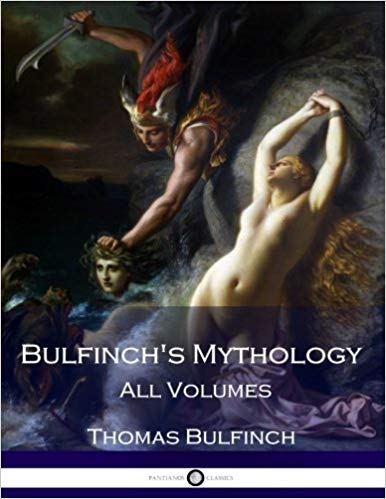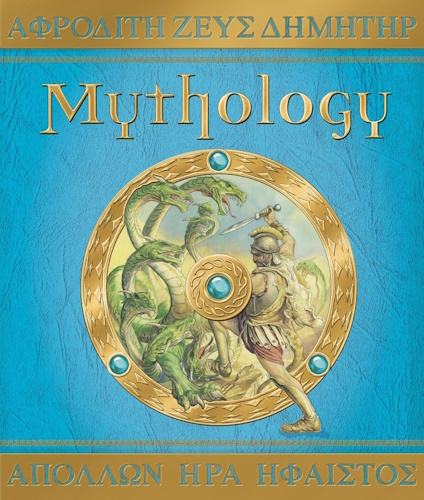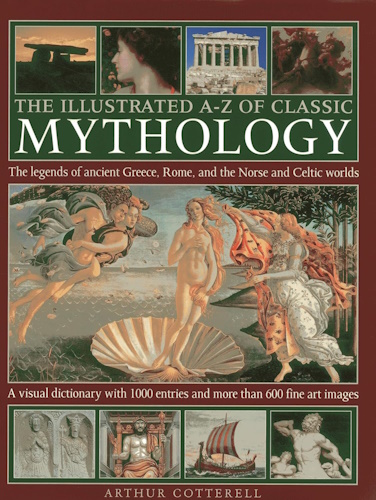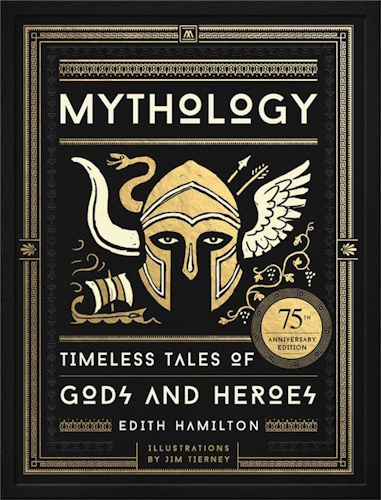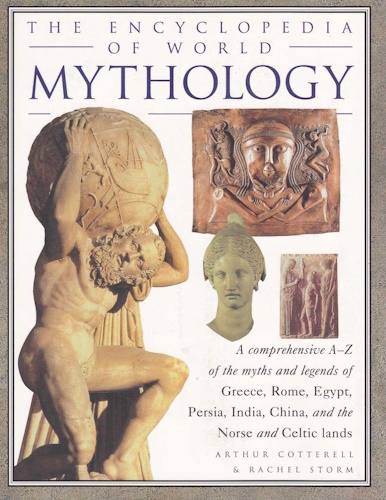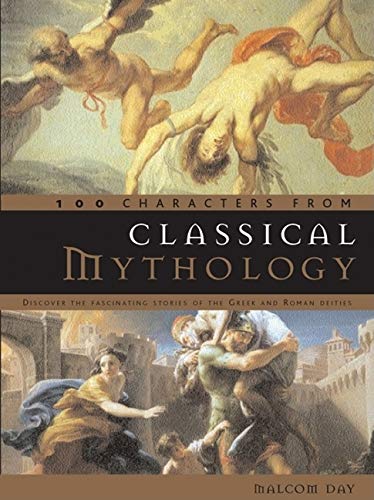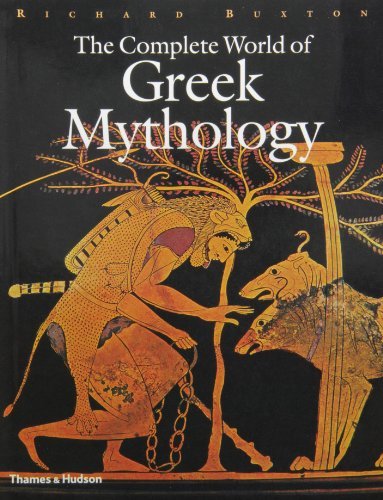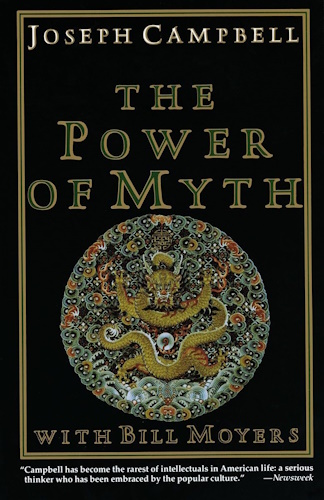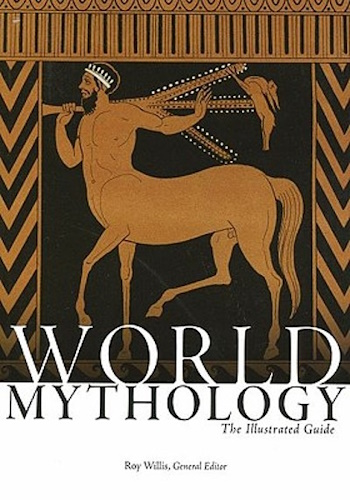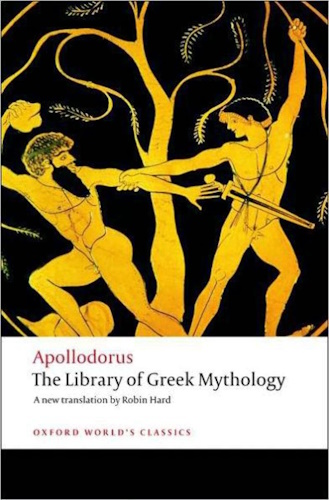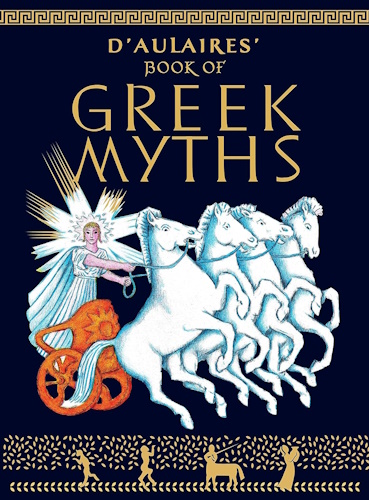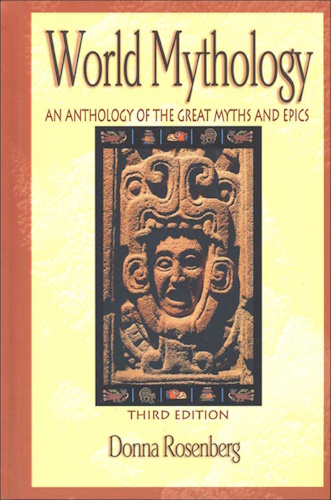
![]()
![]()
page iii.
PREFACE.
BESIDES the education which schools and colleges impart, there is still another kind necessary to completeness. It is that which has for its object a knowledge of polite literature. In the intercourse of polished society a young person will more frequently need an acquaintance with the creations of fancy than with the discoveries of science or the speculations of philosophy.
In an age when intellectual darkness enveloped Western Europe, a constellation of brilliant writers arose in Italy. Of these, Pulci (born in 1431); Boiardo (1434), and Ariosto (1474) took for their subjects the romantic fables which had for many ages been transmitted in the lays of bards and the legends of monkish chroniclers. These fables they arranged in order, adorned with the embellishments of fancy, amplified from their own invention, and stamped with immortality. It may safely be asserted, that as long as civilization shall en-
page iv.
dure, these productions will retain their place among the most cherished creations of human genius.
In two previous works, "The Age of Fable" and "The Age of Chivalry," the author of this volume has endeavored to supply to the modem reader such knowledge of the fables of classical and mediaeval literature as is needed to render intelligible the allusions which occur in reading and conversation. This volume is intended to carry out the same design. Like its predecessors, it aspires to a higher character than that of a work of mere amusement. It claims to be useful, in acquainting its readers with the subjects of the works of the great poets of Italy. Some knowledge of these is expected of every well-educated young person.
In reading these romances, we cannot fail to observe how the primitive inventions have been used, again and again, by successive generations of fabulists. The Siren of Ulysses is the prototype of the Siren of Orlando, and the character of Circe reappears in Alcina. The fountains of Love and Hatred may be traced to the story of Cupid and Psyche; and similar effects produced by a magic draught appear in the tale of Tristram and Isoude, and, substituting a flower for the draught, in Shakespeare's "Midsummer Night's Dream." There are many other instances of the same kind which the reader will recognize without our assistance.
The sources whence we derive these stories are, first,
page v.
the Italian poets named above; next, the "Romans de Chevalerie" of the Comte de Tressan; lastly, certain German collections of popular tales. Some chapters have been borrowed from Leigh Hunt's Translations from the Italian Poets. It seemed unnecessary to do over again what he had already done so well; yet, on the other hand, those stories could not be omitted from the series without leaving it incomplete.
INTRODUCTION.
Those who have investigated the origin of the romantic fables relating to Charlemagne and his peers are of opinion that the deeds of Charles Martel, and perhaps of other Charleses, have been blended in popular tradition with those properly belonging to Charlemagne. It was indeed a most momentous era; and if our readers will have patience, before entering on the perusal of the fabulous annals which we are about to lay before them, to take a rapid survey of the real history of the times, they will find it hardly less romantic than the tales of the poets.
In the century beginning from the year 600, the countries bordering upon the native land of our Saviour, to the east and south, had not yet received his religion. Arabia was the seat of an idolatrous religion resembling that of the ancient Persians, who worshipped the sun, moon, and stars. In Mecca, in the year 571, Mahomet was born, and here, at the age of forty, he proclaimed himself the prophet of God, in dignity as superior to Christ as Christ had been to Moses. Having obtained by slow degrees a considerable number of disciples, he resorted to arms to diffuse his religion. The energy and zeal of his followers, aided by the weakness of the neighboring nations, enabled him and his successors to spread the sway of Arabia and the religion of Mahomet over the countries to the east as far as the Indus, northward over Persia and Asia Minor, westward over Egypt and the southern shores of the Mediterranean, and thence over the principal portion of Spain. All this was done within one hundred years from the Hegira, or flight of Mahomet from Mecca to Medina, which happened in the year 622, and is the era from which Mahometans reckon time, as we do from the birth of Christ.
From Spain the way was open for the Saracens (so the followers of Mahomet were called) into France, the conquest of which, if achieved, would have been followed very probably by that of all the rest of Europe, and would have resulted in the banishment of Christianity from the earth. For Christianity was not at that day universally professed, even by those nations which we now regard as foremost in civilization. Great part of Germany, Britain, Denmark, and Russia were still pagan or barbarous.
At that time there ruled in France, though without the title of king, the first of those illustrious Charleses of whom we have spoken, Charles Martel, the grandfather of Charlemagne. The Saracens of Spain had made incursions into France in 712 and 718, and had retired, carrying with them a vast booty. In 725, Anbessa, who was then the Saracen governor of Spain, crossed the Pyrenees with a numerous army, and took by storm the strong town of Carcassone. So great was the terror excited by this invasion, that the country for a wide extent submitted to the conqueror, and a Mahometan governor for the province was appointed and installed at Narbonne. Anbessa, however, received a fatal wound in one of his engagements, and the Saracens, being thus checked from further advance, retired to Narbonne.
In 732 the Saracens again invaded France under Abdalrahman, advanced rapidly to the banks of the Garonne, and laid siege to Bordeaux. The city was taken by assault and delivered up to the soldiery. The invaders still pressed forward, and spread over the territories of Orleans, Auxerre and Sens. Their advanced parties were suddenly called in by their chief, who had received information of the rich abbey of St. Martin of Tours, and resolved to plunder and destroy it.
Charles during all this time had done nothing to oppose the Saracens, for the reason that the portion of France over which their incursions had been made was not at that time under his dominion, but constituted an independent kingdom, under the name of Aquitaine, of which Eude was king. But now Charles became convinced of the danger, and prepared to encounter it. Abdalrahman was advancing toward Tours, when intelligence of the approach of Charles, at the head of an army of Franks, compelled him to fall back upon Poitiers, in order to seize an advantageous field of battle.
Charles Martel had called together his warriors from every part of his dominions, and, at the head of such an army as had hardly ever been seen in France, crossed the Loire, probably at Orleans, and, being joined by the remains of the army of Aquitaine, came in sight of the Arabs in the month of October, 732. The Saracens seem to have been aware of the terrible enemy they were now to encounter, and for the first time these formidable conquerors hesitated. The two armies remained in presence during seven days before either ventured to begin the attack; but at length the signal for battle was given by Abdalrahman, and the immense mass of the Saracen army rushed with fury on the Franks. But the heavy line of the Northern warriors remained like a rock, and the Saracens, during nearly the whole day, expended their strength in vain attempts to make any impression upon them. At length, about four o'clock in the afternoon, when Abdalrahman was preparing for a new and desperate attempt to break the line of the Franks, a terrible clamor was heard in the rear of the Saracens. It was King Eude, who, with his Aquitanians, had attacked their camp, and a great part of the Saracen army rushed tumultuously from the field to protect their plunder. In this moment of confusion the line of the Franks advanced, and, sweeping the field before it, carried fearful slaughter amongst the enemy. Abdalrahman made desperate efforts to rally his troops, but when he himself, with the bravest of his officers, fell beneath the swords of the Christians, all order disappeared, and the remains of his army sought refuge in their immense camp, from which Eude and his Aquitanians had been repulsed. It was now late, and Charles, unwilling to risk an attack on the camp in the dark, withdrew his army, and passed the night in the plain, expecting to renew the battle in the morning.
Accordingly, when daylight came, the Franks drew up in order of battle, but no enemy appeared; and when at last they ventured to approach the Saracen camp they found it empty. The invaders had taken advantage of the night to begin their retreat, and were already on their way back to Spain, leaving their immense plunder behind to fall into the hands of the Franks.
This was the celebrated battle of Tours, in which vast numbers of the Saracens were slain, and only fifteen hundred of the Franks. Charles received the surname of Martel (the Hammer) in consequence of this victory.
The Saracens, notwithstanding this severe blow, continued to hold their ground in the south of France; but Pepin, the son of Charles Martel, who succeeded to his father's power, and assumed the title of king, successively took from them the strong places they held; and in 759, by the capture of Narbonne, their capital, extinguished the remains of their power in France.
Charlemagne, or Charles the Great, succeeded his father, Pepin, on the throne in the year 768. This prince, though the hero of numerous romantic legends, appears greater in history than in fiction. Whether we regard him as a warrior or as a legislator, as a patron of learning or as the civilizer of a barbarous nation, he is entitled to our warmest admiration. Such he is in history; but the romancers represent him as often weak and passionate, the victim of treacherous counsellors, and at the mercy of turbulent barons, on whose prowess he depends for the maintenance of his throne. The historical representation is doubtless the true one, for it is handed down in trustworthy records, and is confirmed by the events of the age. At the height of his power, the French empire extended over what we now call France, Germany, Switzerland, Holland, Belgium, and great part of Italy.
In the year 800 Charlemagne, being in Rome, whither he had gone with a numerous army to protect the Pope, was crowned by the Pontiff Emperor of the West. On Christmas day Charles entered the Church of St. Peter, as if merely to take his part in the celebration of the mass with the rest of the congregation. When he approached the altar and stooped in the act of prayer the Pope stepped forward and placed a crown of gold upon his head; and immediately the Roman people shouted, "Life and victory to Charles the August, crowned by God the great and pacific Emperor of the Romans." The Pope then prostrated himself before him, and paid him reverence, according to the custom established in the times of the ancient Emperors, and concluded the ceremony by anointing him with consecrated oil.
Charlemagne's wars were chiefly against the pagan and barbarous people, who, under the name of Saxons, inhabited the countries now called Hanover and Holland. He also led expeditions against the Saracens of Spain; but his wars with the Saracens were not carried on, as the romances assert, in France, but on the soil of Spain. He entered Spain by the Eastern Pyrenees, and made an easy conquest of Barcelona and Pampeluna. But Saragossa refused to open her gates to him, and Charles ended by negotiating and accepting a vast sum of gold as the price of his return over the Pyrenees.
On his way back, he marched with his whole army through the gorges of the mountains by way of the valleys of Engui, Eno, and Roncesvalles. The chief of this region had waited upon Charlemagne, on his advance, as a faithful vassal of the monarchy; but now, on the return of the Franks, he had called together all the wild mountaineers who acknowledged him as their chief, and they occupied the heights of the mountains under which the army had to pass. The main body of the troops met with no obstruction, and received no intimation of danger; but the rear-guard, which was considerably behind, and encumbered with its plunder, was overwhelmed by the mountaineers in the pass of Roncesvalles, and slain to a man. Some of the bravest of the Frankish chiefs perished on this occasion, among whom is mentioned Roland or Orlando, governor of the marches or frontier of Brittany. His name became famous in after times, and the disaster of Roncesvalles and death of Roland became eventually the most celebrated episode in the vast cycle of romance.
Though after this there were hostile encounters between the armies of Charlemagne and the Saracens, they were of small account, and generally on the soil of Spain. Thus the historical foundation for the stories of the romancers is but scanty, unless we suppose the events of an earlier and of a later age to be incorporated with those of Charlemagne's own time.
There is, however, a pretended history, which for a long time was admitted as authentic, and attributed to Turpin, Archbishop of Rheims, a real personage of the time of Charlemagne. Its title is "History of Charles the Great and Orlando." It is now unhesitatingly considered as a collection of popular traditions, produced by some credulous and unscrupulous monk, who thought to give dignity to his romance by ascribing its authorship to a well-known and eminent individual. It introduces its pretended author, Bishop Turpin, in this manner:
"Turpin, Archbishop of Rheims, the friend and secretary of Charles the Great, excellently skilled in sacred and profane literature, of a genius equally adapted to prose and verse, the advocate of the poor, beloved of God in his life and conversation, who often fought the Saracens, hand to hand, by the Emperor's side, he relates the acts of Charles the Great in one book, and flourished under Charles and his son Louis, to the year of our Lord eight hundred and thirty."
The titles of some of Archbishop Turpin's chapters will show the nature of his history. They are these: "Of the Walls of Pampeluna, that fell of themselves." "Of the War of the holy Facundus, where the Spears grew." (Certain of the Christians fixed their spears in the evening, erect in the ground, before the castle; and found them, in the morning, covered with bark and branches.) "How the Sun stood still for Three Days, and of the Slaughter of Four Thousand Saracens."
Turpin's history has perhaps been the source of the marvellous adventures which succeeding poets and romancers have accumulated around the names of Charlemagne and his Paladins, or Peers. But Ariosto and the other Italian poets have drawn from different sources, and doubtless often from their own invention, numberless other stories which they attribute to the same heroes, not hesitating to quote as their authority "the good Turpin," though his history contains no trace of them; and the more outrageous the improbability, or rather the impossibility, of their narrations, the more attentive are they to cite "the Archbishop," generally adding their testimonial to his unquestionable veracity.
The principal Italian poets who have sung the adventures of the peers of Charlemagne are Pulci, Boiardo, and Ariosto. The characters of Orlando, Rinaldo, Astolpho, Gano, and others, are the same in all, though the adventures attributed to them are different. Boiardo tells us of the loves of Orlando, Ariosto of his disappointment and consequent madness, Pulci of his death.
Ogier, the Dane, is a real personage. History agrees with romance in representing him as a powerful lord who, originally from Denmark and a Pagan, embraced Christianity, and took service under Charlemagne. He revolted from the Emperor, and was driven into exile. He afterwards led one of those bands of piratical Northmen which ravaged France under the reigns of Charlemagne's degenerate successors. The description which an ancient chronicler gives of Charlemagne, as described by Ogier, is so picturesque, that we are tempted to transcribe it. Charlemagne was advancing to the siege of Pavia. Didier, King of the Lombards, was in the city with Ogier, to whom he had given refuge. When they learned that the king was approaching they mounted a high tower, whence they could see far and wide over the country. "They first saw advancing the engines of war, fit for the armies of Darius or Julius Caesar. 'There is Charlemagne,' said Didier. 'No,' said Ogier. The Lombard next saw a vast body of soldiers, who filled all the plain. 'Certainly Charles advanced with that host,' said the king. 'Not yet,' replied Ogier. 'What hope for us,' resumed the king, 'if he brings with him a greater host than that?' At last Charles appeared, his head covered with an iron helmet, his hands with iron gloves, his breast and shoulders with a cuirass of iron, his left hand holding an iron lance, while his right hand grasped his sword. Those who went before the monarch, those who marched at his side, and those who followed him, all had similar arms. Iron covered the fields and the roads; iron points reflected the rays of the sun. This iron, so hard, was borne by a people whose hearts were harder still. The blaze of the weapons flashed terror into the streets of the city."
This picture of Charlemagne in his military aspect would be incomplete without a corresponding one of his "mood of peace." One of the greatest of modern historians, M. Guizot, has compared the glory of Charlemagne to a brilliant meteor, rising suddenly out of the darkness of barbarism to disappear no less suddenly in the darkness of feudalism. But the light of this meteor was not extinguished, and reviving civilization owed much that was permanently beneficial to the great Emperor of the Franks. His ruling hand is seen in the legislation of his time, as well as in the administration of the laws. He encouraged learning; he upheld the clergy, who were the only peaceful and intellectual class, against the encroaching and turbulent barons; he was an affectionate father, and watched carefully over the education of his children, both sons and daughters. Of his encouragement of learning we will give some particulars.
He caused learned men to be brought from Italy and from other foreign countries to revive the public schools of France, which had been prostrated by the disorders of preceding times. He recompensed these learned men liberally, and kept some of them near himself, honoring them with his friendship. Of these the most celebrated is Alcuin, an Englishman, whose writings still remain, and prove him to have been both a learned and a wise man. With the assistance of Alcuin, and others like him, he founded an academy or royal school, which should have the direction of the studies of all the schools of the kingdom. Charlemagne himself was a member of this academy on equal terms with the rest. He attended its meetings, and fulfilled all the duties of an academician. Each member took the name of some famous man of antiquity. Alcuin called himself Horace, another took the name of Augustin, a third of Pindar. Charlemagne, who knew the Psalms by heart, and who had an ambition to be, according to his conception, A KING AFTER GOD'S OWN HEART, received from his brother academicians the name of David.
Of the respect entertained for him by foreign nations an interesting proof is afforded in the embassy sent to him by the Caliph of the Arabians, the celebrated Haroun al Raschid, a prince in character and conduct not unlike to Charlemagne. The ambassadors brought with them, besides other rich presents, a clock, the first that was seen in Europe, which excited universal admiration. It had the form of a twelve-sided edifice with twelve doors. These doors formed niches, in each of which was a little statue representing one of the hours. At the striking of the hour the doors, one for each stroke, was seen to open, and from the doors to issue as many of the little statues, which, following one another, marched gravely round the tower. The motion of the clock was caused by water, and the striking was effected by balls of brass equal to the number of the hours, which fell upon a cymbal of the same metal, the number falling being determined by the discharge of the water, which, as it sunk in the vessel, allowed their escape.
Charlemagne was succeeded by his son Louis, a well-intentioned but feeble prince, in whose reign the fabric reared by Charles began rapidly to crumble. Louis was followed successively by two Charleses, incapable princes, whose weak and often tyrannical conduct is no doubt the source of incidents of that character ascribed in the romances to Charlemagne.
The lawless and disobedient deportment of Charles's paladins, instances of which are so frequent in the romantic legends, was also a trait of the declining empire, but not of that of Charlemagne.
-
Urantia Book, 44:0.11 - The Celestial Artisans
Never in your long ascendancy will you lose the power to recognize your associates of former existences. Always, as you ascend inward in the scale of life, will you retain the ability to recognize and fraternize with the fellow beings of your previous and lower levels of experience. Each new translation or resurrection will add one more group of spirit beings to your vision range without in the least depriving you of the ability to recognize your friends and fellows of former estates.
-
Princess Bride 1987 Wallace Shawn (Vizzini) and Mandy Patinkin (Inigo Montoya)
Vizzini: HE DIDN'T FALL? INCONCEIVABLE.
Inigo Montoya: You keep using that word. I do not think it means what you think it means. -
Urantia Book, 117:4.14 - The Finite God
And here is mystery: The more closely man approaches God through love, the greater the reality -- actuality -- of that man. The more man withdraws from God, the more nearly he approaches nonreality -- cessation of existence. When man consecrates his will to the doing of the Father's will, when man gives God all that he has, then does God make that man more than he is.
-
Urantia Book, 167:7.4 - The Talk About Angels
"And do you not remember that I said to you once before that, if you had your spiritual eyes anointed, you would then see the heavens opened and behold the angels of God ascending and descending? It is by the ministry of the angels that one world may be kept in touch with other worlds, for have I not repeatedly told you that I have other sheep not of this fold?"
-
Urantia Book, Foreword - 0:12.12 - The Trinities
But we know that there dwells within the human mind a fragment of God, and that there sojourns with the human soul the Spirit of Truth; and we further know that these spirit forces conspire to enable material man to grasp the reality of spiritual values and to comprehend the philosophy of universe meanings. But even more certainly we know that these spirits of the Divine Presence are able to assist man in the spiritual appropriation of all truth contributory to the enhancement of the ever-progressing reality of personal religious experience—God-consciousness.
-
Urantia Book, 1:4.3 - The Mystery Of God
When you are through down here, when your course has been run in temporary form on earth, when your trial trip in the flesh is finished, when the dust that composes the mortal tabernacle "returns to the earth whence it came"; then, it is revealed, the indwelling "Spirit shall return to God who gave it." There sojourns within each moral being of this planet a fragment of God, a part and parcel of divinity. It is not yet yours by right of possession, but it is designedly intended to be one with you if you survive the mortal existence.
-
Urantia Book, 1:4.1 - The Mystery Of God
And the greatest of all the unfathomable mysteries of God is the phenomenon of the divine indwelling of mortal minds. The manner in which the Universal Father sojourns with the creatures of time is the most profound of all universe mysteries; the divine presence in the mind of man is the mystery of mysteries.
-
Urantia Book, 1:4.6 - The Mystery Of God
To every spirit being and to every mortal creature in every sphere and on every world of the universe of universes, the Universal Father reveals all of his gracious and divine self that can be discerned or comprehended by such spirit beings and by such mortal creatures. God is no respecter of persons, either spiritual or material. The divine presence which any child of the universe enjoys at any given moment is limited only by the capacity of such a creature to receive and to discern the spirit actualities of the supermaterial world.
-
Urantia Book, 11:0.1 - The Eternal Isle Of Paradise
Paradise is the eternal center of the universe of universes and the abiding place of the Universal Father, the Eternal Son, the Infinite Spirit, and their divine co-ordinates and associates. This central Isle is the most gigantic organized body of cosmic reality in all the master universe. Paradise is a material sphere as well as a spiritual abode. All of the intelligent creation of the Universal Father is domiciled on material abodes; hence must the absolute controlling center also be material, literal. And again it should be reiterated that spirit things and spiritual beings are real.
-
Urantia Book, 50:6.4 - Planetary Culture
Culture presupposes quality of mind; culture cannot be enhanced unless mind is elevated. Superior intellect will seek a noble culture and find some way to attain such a goal. Inferior minds will spurn the highest culture even when presented to them ready-made.
-
Urantia Book, 54:1.6 - True And False Liberty
True liberty is the associate of genuine self-respect; false liberty is the consort of self-admiration. True liberty is the fruit of self-control; false liberty, the assumption of self-assertion. Self-control leads to altruistic service; self-admiration tends towards the exploitation of others for the selfish aggrandizement of such a mistaken individual as is willing to sacrifice righteous attainment for the sake of possessing unjust power over his fellow beings.
-
Urantia Book, 54:1.9 - True And False Liberty
How dare the self-willed creature encroach upon the rights of his fellows in the name of personal liberty when the Supreme Rulers of the universe stand back in merciful respect for these prerogatives of will and potentials of personality! No being, in the exercise of his supposed personal liberty, has a right to deprive any other being of those privileges of existence conferred by the Creators and duly respected by all their loyal associates, subordinates, and subjects.
-
Urantia Book, 54:1.8 - True And False Liberty
There is no error greater than that species of self-deception which leads intelligent beings to crave the exercise of power over other beings for the purpose of depriving these persons of their natural liberties. The golden rule of human fairness cries out against all such fraud, unfairness, selfishness, and unrighteousness.
